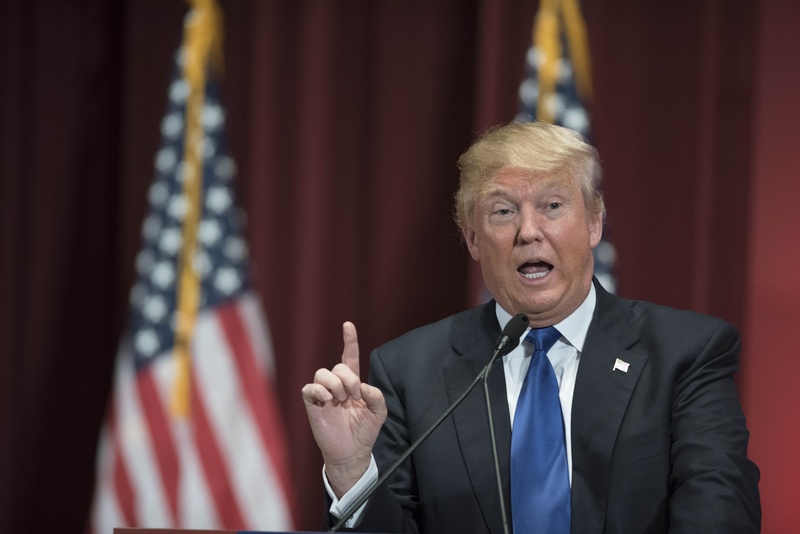In addition to border wall, Trump plans executive action on detention space
As the Trump administration moves to expedite construction of a physical barrier on the southern border, it will also begin building more detention space for undocumented immigrants in the area and work to withhold federal dollars from entities that don’t enforce immigration laws, the White House announced Wednesday.
“Building this barrier is more than just a campaign promise, it’s a common-sense first step to really securing our porous border,” White House press secretary Sean Spicer told reporters during a briefing. “And yes, one way or another — as the president has said before — Mexico will pay for it.”
Spicer said Trump is expected to sign the executive orders Wednesday after the swearing-in ceremony for Department of Homeland Security Secretary John Kelly.
“We’re going to create more detention space for illegal immigrants along the southern border to make it easier and cheaper to detain them and return them to their country of origin,” Spicer said. “We’re going to end the last administration’s dangerous catch-and-release policy, which has led to the deaths of many Americans.”
Spicer added that the administration would also revert back to using the controversial Secure Communities program, which was replaced by former President Obama by the Priority Enforcement Program.
Through the Secure Communities program, administered by U.S. Immigration and Customs Enforcement, local law enforcement compares the fingerprints of those arrested to a federal database to determine if the individual is eligible for deportation under current federal immigration laws. Federal funds will be withheld from cities and states that don’t comply with federal law, Spicer said.
“After these criminals spend time in prison for the crimes they have committed, they’re going to get one-way tickets to their country of origin,” he said.
In order to force those governments to take back the deportees, Spicer said the administration would consider withholding visas and “use other tools” to ensure compliance.
Border lawmakers and officials quickly criticized the idea that a wall was needed and instead advocated for a more modern solution,
During a visit to the state Capitol on Wednesday, Laredo Mayor Pete Saenz said he was disappointed that Trump would make the decision without reaching out to border leaders.
“It’s sad day In Laredo, Texas. And frankly on the entire border. We would hope maybe the people that surround President Trump would think differently. Maybe they can influence him still,” he said. “We respect him as our president, but we respectfully disagree with this notion of a wall. There is room for compromise — we’re not totally against any type of fencing if it’s strategically placed.”
State Rep. César Blanco, D-El Paso, said Trump had no choice but to please his out-of-touch supporters.
“We’ve seen that the border wall is very expensive to maintain. It’s politics as usual,” he said. “I think Trump has to fulfill his campaign promise to build a wall, and I think Republicans across the country are lining up behind him. It’d be smart for him to invest in technology for our bridges.”
Before Spicer’s briefing, Trump told ABC News that he’d find a way to compel Mexico to pay for the barrier.
“We are going to be starting those negotiations relatively soon,” he said. “Absolutely, 100 percent [they will pay us back].”
When asked about Mexican President Enrique Peña Nieto’s recent statement that his government will not pay for any part of the project, Trump said, “He has to say that.”
“I am just telling you there will be a payment. It will be in a form, perhaps a complicated form,” he continued. “You have to understand what I am doing is good for the United States. It’s also going to be good for Mexico.”
This article originally appeared in The Texas Tribune at https://www.texastribune.org/2017/01/25/trump-announces-executive-actions-immigration/.






